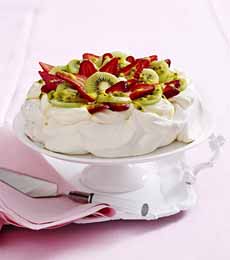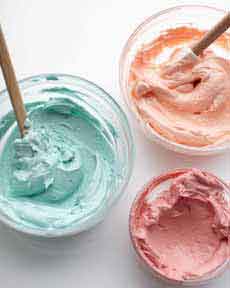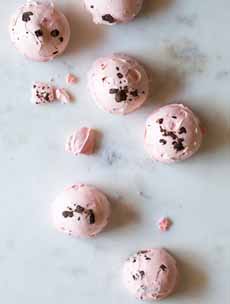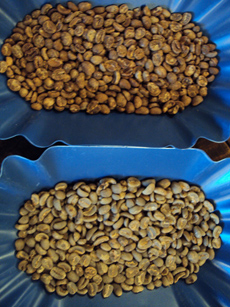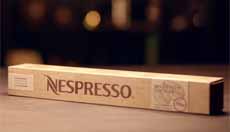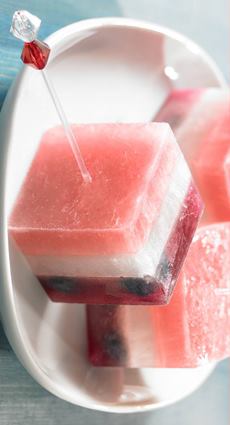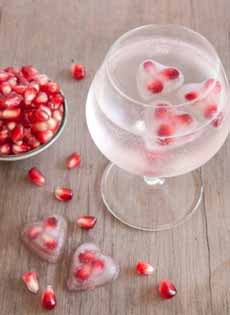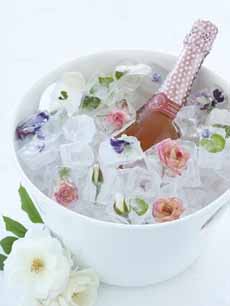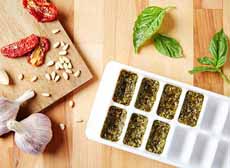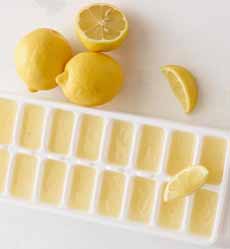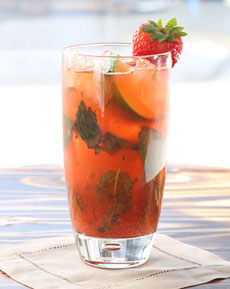|
All meringue begins the same: with egg whites beaten with some form of sugar. But from there, pastry chefs evolved different preparation techniques to produce different results.
You may think of meringue as cookies, or dessert cups that hold fruit or mousse, like vacherins or pavlovas*. It can also be made into a cake layer (dacquoise), or float, freshly beaten, in a sea of creme anglaise.
The Difference Between Pavlova & Vacherin
Pavlova is a meringue-based dessert or formed into a crisp shell. It is filled with fresh fruit, ice cream, mousse and/or whipped cream.
Vacherin is also made of crisp meringue, but typically formed into layers that are filled with almond paste, fruits, ice cream and/or whipped cream.
Essendially, they use the same ingredients, but style them differently.
(Note that vacherin is also the name of a cow’s milk cheese made in France and Switzerland).
TYPES OF MERINGUE
French Meringue
That’s classic meringue, a dry meringue also called basic meringue.
Egg whites are beaten until they form soft peaks. Then sugar—ideally superfine sugar, which you can make it by pulsing table sugar in a food processor—is slowly incorporated to maximize volume. This results in soft, airy, light peaks that stand up straight—for a while, anyway (they’ll ultimately deflate).
French meringue is spooned or piped into dessert shells (such as vacherins) and cake layers (as in a dacquoise), and baked, later to be topped with fruit, mousse, or whipped cream.
It is also often folded into batter to make lady fingers, sponge cakes and soufflés.
Italian Meringue
A softer style of meringue, Italian meringue can top a lemon meringue pie or Baked Alaska.
One of our favorite childhood desserts, Floating Island (île flottante in French), consists of beaten egg whites form into “islands” and set in a sea of custard sauce (crème anglaise).
After the whites have been whipped to firm peaks, boiling sugar syrup is poured in. Whipping continues until the meringue has reached its full volume, sand is stiff and satiny.
The technique delivers a more stable, soft meringue for cakes, pastries and pies, that doesn’t collapse.
Italian meringue is often used to frost cakes; it can be used alone or combined with buttercream. It creates meringue toppings on pies.
Here‘s a recipe.
As a technique, pastry chefs use it to lighten ice cream, sorbet and mousse.
Swiss Meringue
Swiss meringue is whisked over a bain-marie to warm the egg whites. After the sugar is completely dissolved, the mixture is removed from the heat and beaten vigorously to attain full volume. It is then beaten at a lower speed until cool and very stiff.
This forms a dense, glossy marshmallow-like meringue. It is usually then baked.
Swiss meringue is smoother, silkier, and somewhat denser than French meringue and is often used as a base for buttercream frostings.
Here’s a recipe from Martha Stewart.
MERINGUE-MAKING TIPS
The mixing bowl and beaters must be absolutely clean. Any grease in the mixture will deflate the meringue.
Do not make meringues in humid weather. Moisture will prevent egg whites from forming stiff peaks.
RECIPE #1: RED WINE ITALIAN MERINGUE COOKIES
Only a pinch of red wine sea salt is used, to garnish; so if you don’t have/want to make red sea salt (the recipe is below), look to see what you do have; lavender or rosemary sea salt, for example. In a pinch (pun intended), you can use plain kosher salt or coarse sea salt.
Ingredients
4 ounces dry red wine
7 tablespoons sugar
1 large egg whits, room temperature
1 teaspoon cream of tartar
Pinch salt
Preparation
1. HEAT the wine and sugar to a rolling boil, in a saucepan over high heat.
2. ADD the egg whites to a clean bowl and mix at high speed, until the egg white is all frothy and starts to form soft peaks. When the wine comes to a rolling boil…
3. LET the wine boil for another 60 seconds, remove from the heat and pour into a measuring cup with a lip, or other easy-pouring vessel. With the mixer on high…
4. SLOWLY pour the wine down the sides of the bowl. Continue to mix at high speed until the hot mixture reaches room temperature (the volume will continue to increase). Turn off the engine of the mixer once the mixture has cooled down.
|

